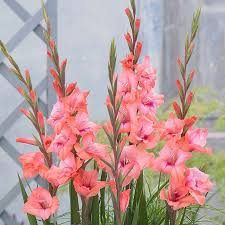In the realm of landscape architecture, the integration of natural elements with human-made structures is an art form that seeks to create harmonious living environments. Orchids, with their exquisite beauty and delicate presence, play a significant role in this endeavor, adding a touch of elegance and tranquility to outdoor spaces. Join us as we explore the seamless integration of orchids into landscape architecture, celebrating the perfect harmony they bring to the design of living environments.

1. Orchids as Focal Points in Landscape Design
In landscape architecture, orchids are often used as focal points to enhance the visual appeal of outdoor spaces. Whether planted in gardens, displayed in pots, or incorporated into living walls and vertical gardens, orchids add a sense of drama and sophistication to the landscape.
The unique shape and vibrant colors of orchid blooms make them ideal focal points, drawing the eye and inviting exploration. By strategically placing orchids in key locations within the landscape, designers can create dynamic compositions that capture the imagination and create memorable experiences for visitors.
2. Orchids in Vertical Gardens and Green Roofs
Vertical gardens and green roofs have become increasingly popular in urban environments as a way to maximize green space and improve air quality. Orchids, with their adaptability to different growing conditions, are well-suited for incorporation into these innovative landscape features.
In vertical gardens, orchids can be planted alongside other plant species to create lush, living tapestries that add texture and color to vertical surfaces. Similarly, on green roofs, orchids can thrive in the well-drained, sunny conditions, providing a burst of color and beauty amidst the urban landscape.
3. Orchids in Botanical Gardens and Arboreta
Botanical gardens and arboreta serve as showcases for the diversity and beauty of the natural world, offering visitors a chance to immerse themselves in lush landscapes and vibrant ecosystems. Orchids, with their vast array of species and hybrids, are often featured prominently in these curated environments.
Botanical gardens and arboreta provide ideal growing conditions for orchids, allowing them to thrive in carefully controlled climates and environments. Visitors to these institutions can marvel at the exquisite beauty of orchids from around the world, gaining a deeper appreciation for the diversity and complexity of these remarkable plants.
4. Orchids in Residential Landscapes: Creating Tranquil Retreats
In residential landscape design, orchids are valued for their ability to create tranquil retreats and outdoor sanctuaries. Whether planted in garden beds, displayed in pots on patios and balconies, or integrated into water features and rock gardens, orchids bring a sense of serenity and beauty to outdoor living spaces.
By incorporating orchids into residential landscapes, designers can create intimate garden spaces that inspire relaxation and rejuvenation. The delicate fragrance and graceful beauty of orchids create an atmosphere of tranquility, inviting residents to unwind and reconnect with nature in their own backyard.
Conclusion
In landscape architecture, the integration of orchids represents a perfect harmony between human-made structures and the natural world. Whether used as focal points in gardens, featured in vertical gardens and green roofs, showcased in botanical gardens and arboreta, or incorporated into residential landscapes, orchids add a touch of elegance and tranquility to outdoor spaces. As we celebrate the seamless integration of orchids into landscape architecture, let us embrace the beauty and serenity they bring to our living environments, creating harmonious landscapes that inspire and delight for generations to come.